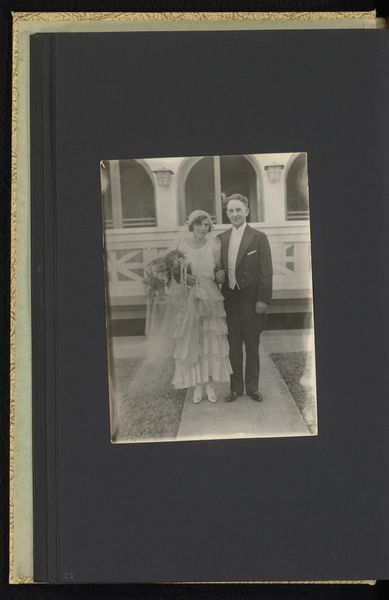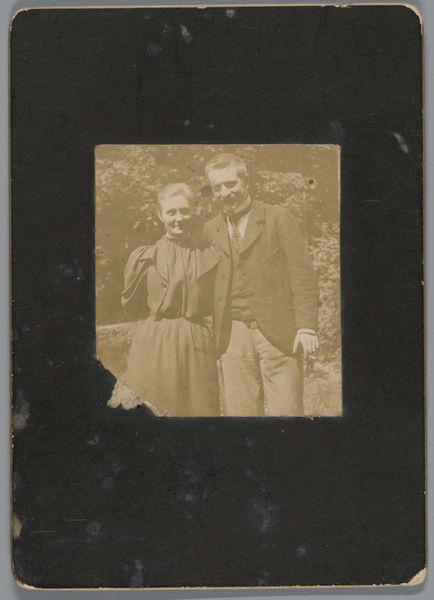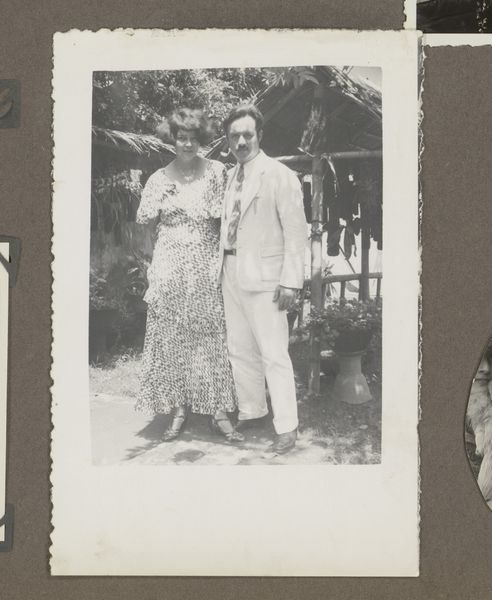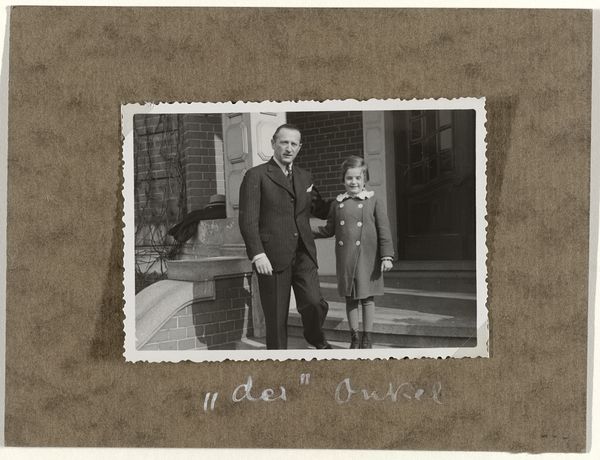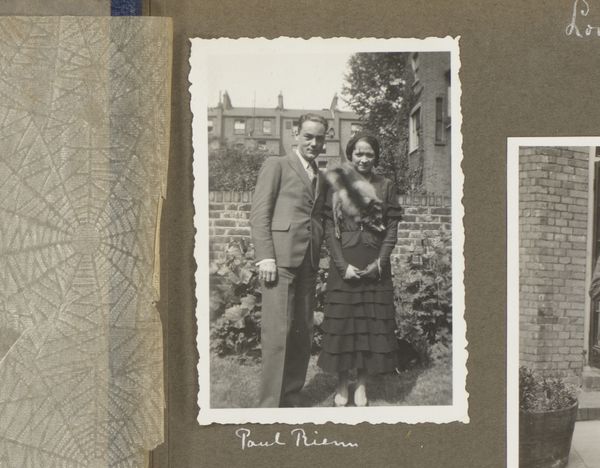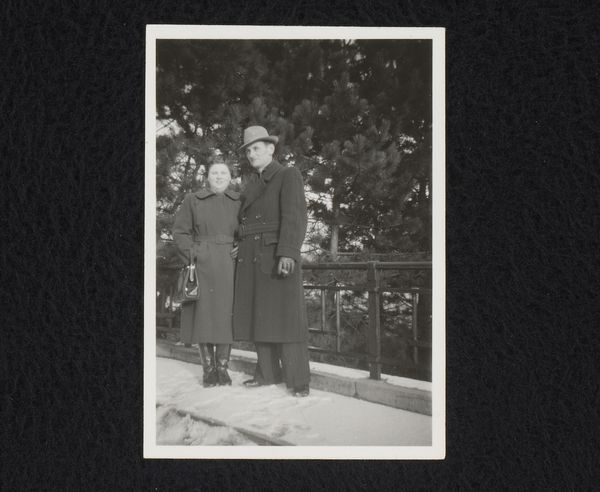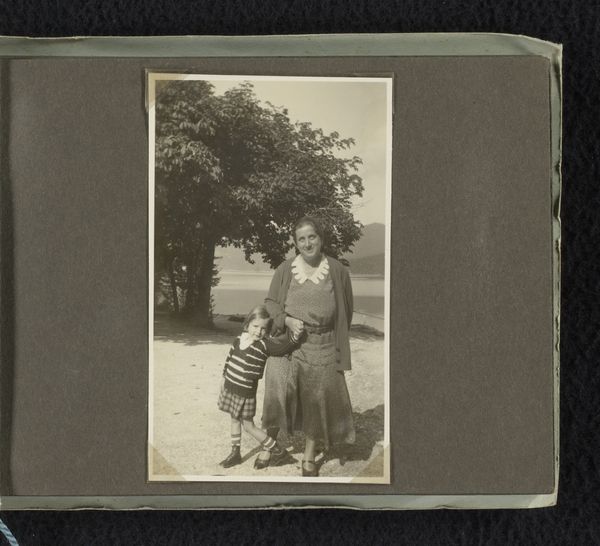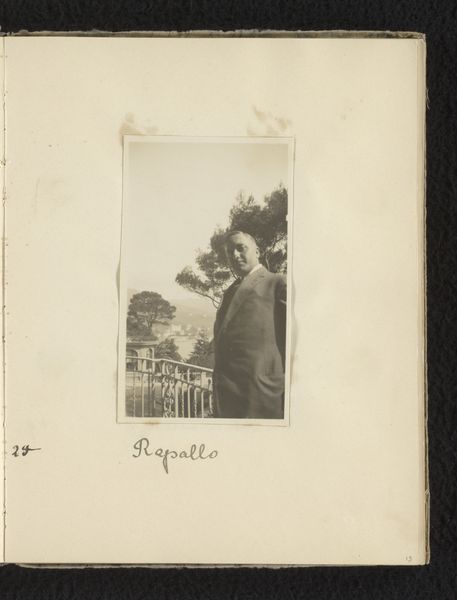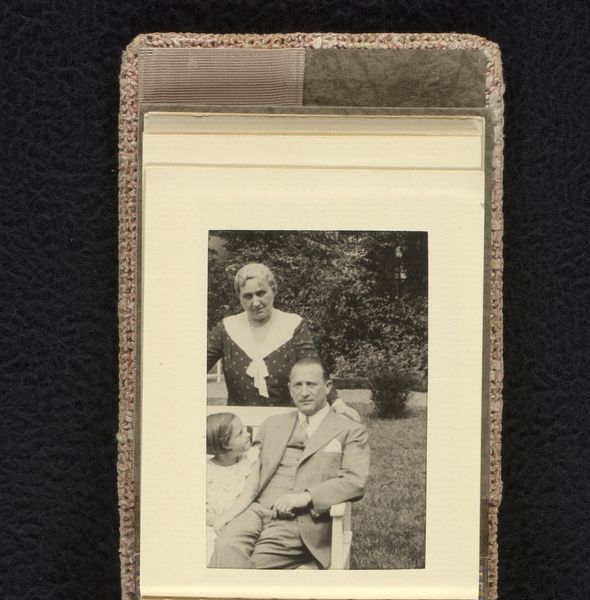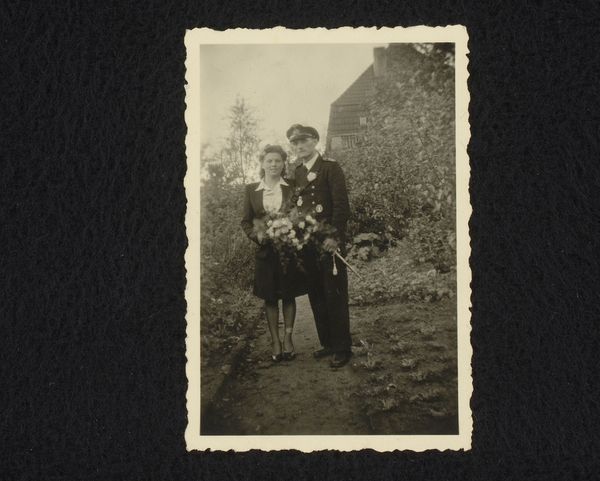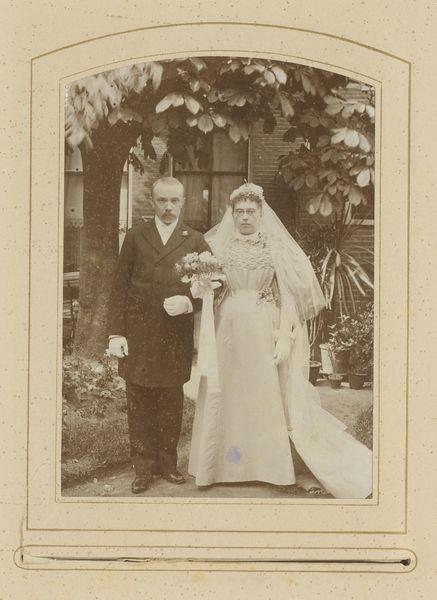
Eugen Wachenheimer en zijn echtgenoot Else Wachenheimer-Moos, 1927, Bad Kissingen 1927
0:00
0:00
photography
#
portrait
#
photography
#
group-portraits
#
modernism
#
realism
Dimensions: height 140 mm, width 90 mm, height 205 mm, width 160 mm
Copyright: Rijks Museum: Open Domain
Editor: We're looking at a photograph from 1927 entitled "Eugen Wachenheimer en zijn echtgenoot Else Wachenheimer-Moos, 1927, Bad Kissingen." It shows a couple, seemingly affluent, posed stiffly in what looks like a park. It has this somber quality to it, perhaps amplified by the sepia tone. How do you interpret this photograph? Curator: It's crucial to see this image within its historical context. Photography in the Weimar Republic oscillated between a desire to portray "Neue Sachlichkeit," or New Objectivity—a sort of realism—and a growing sense of unease. Given the Wachenheimer’s likely Jewish background, consider the rising anti-Semitism of the era. The formal pose, their attire, even the walking sticks, suggest an attempt to project respectability and normalcy amidst an increasingly hostile environment. What details strike you as particularly revealing about their social position or anxieties? Editor: I hadn’t considered the social anxieties it projects! Their clothing and the location point to a certain class, but the way they're holding themselves...it feels deliberate, almost defensive. It makes me wonder, who was this image made for? Curator: Exactly! It prompts us to consider the circulation of images, the power dynamics at play, and who controlled representation. Photography wasn't just about capturing reality, but about constructing it, especially in a period marked by profound social and political upheaval. These images both documented and contributed to larger narratives of identity, belonging, and exclusion. We must examine the politics of imagery to understand the power this family portrait holds. What have you learned from it? Editor: I've never thought about a portrait as a potential act of resistance or a plea for acceptance. Viewing this image now makes me aware of photography as more than just a document, but also as a carefully constructed statement within its historical context. Curator: Precisely! It reveals how personal portraits can be powerful visual statements about identity within a turbulent historical narrative.
Comments
No comments
Be the first to comment and join the conversation on the ultimate creative platform.
